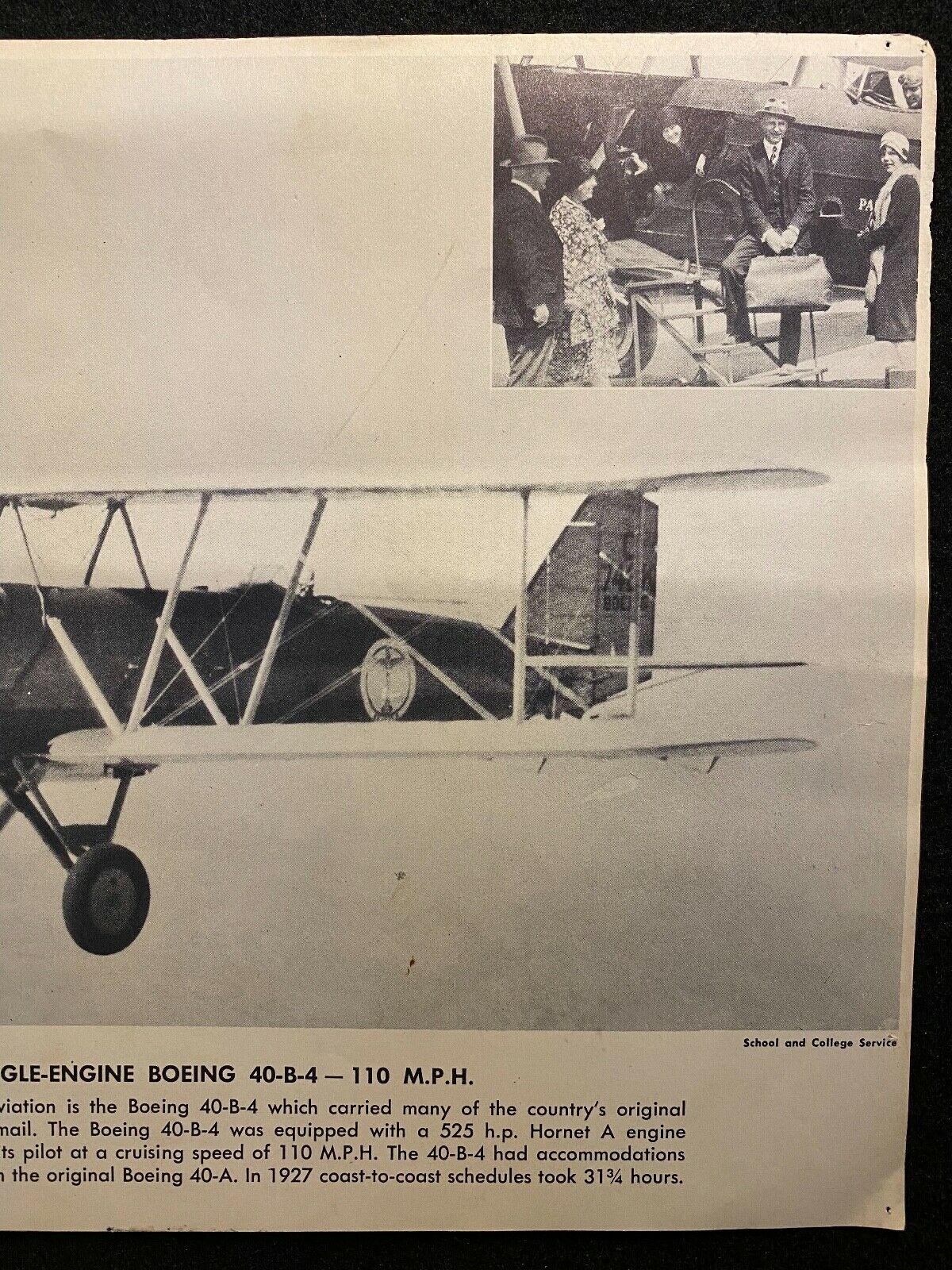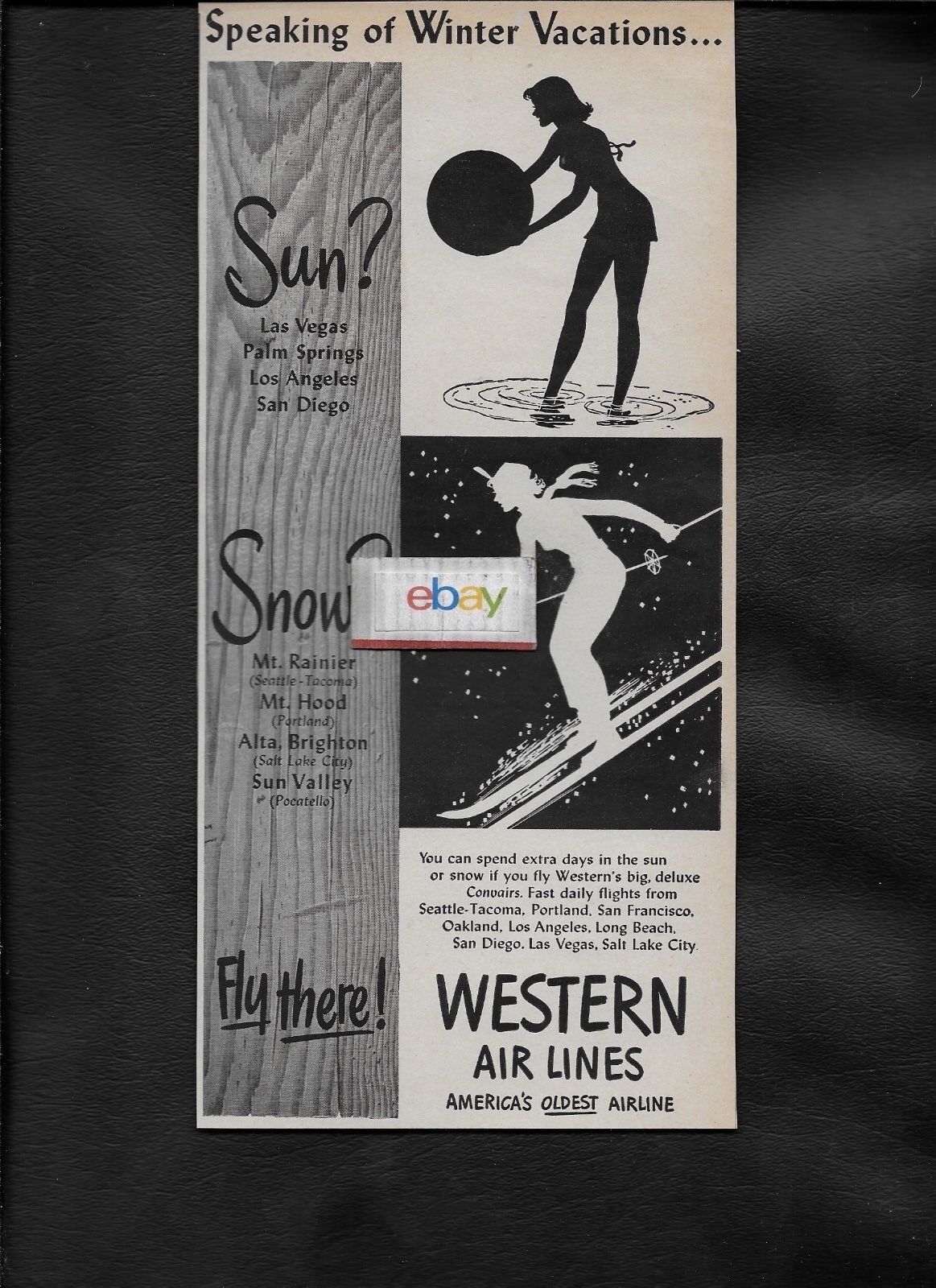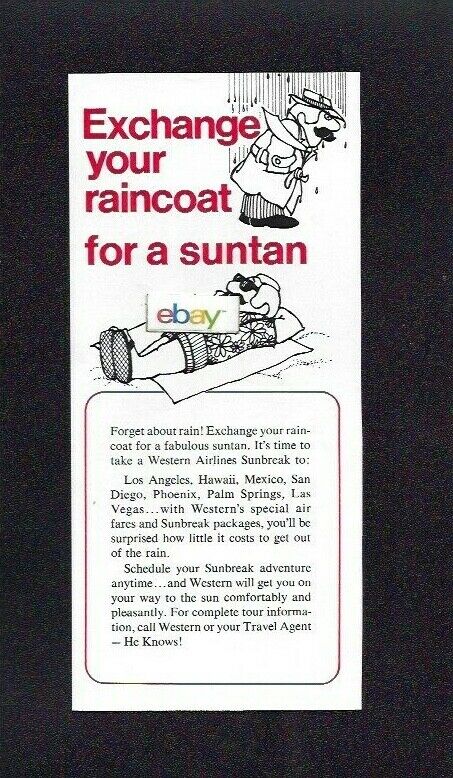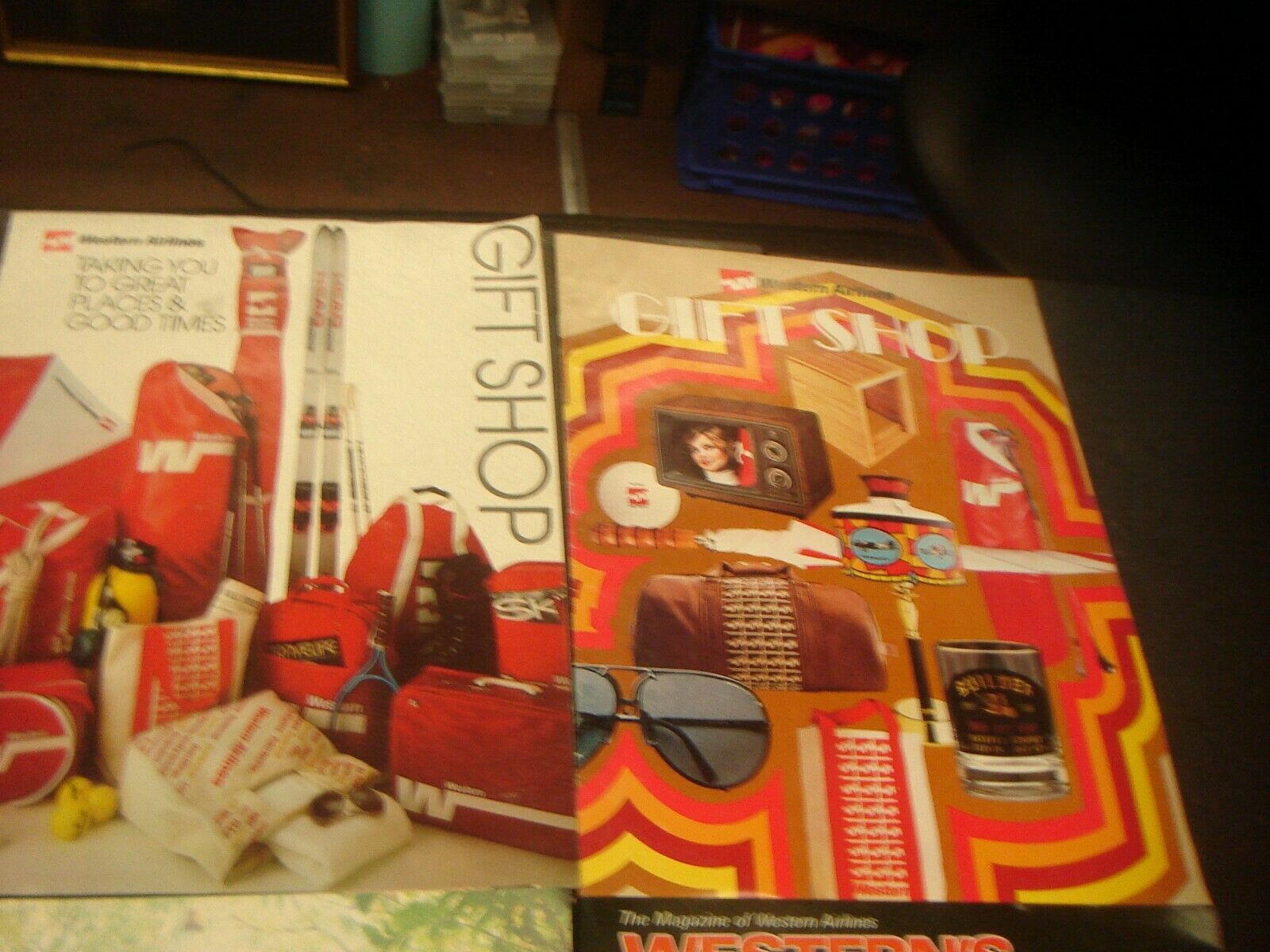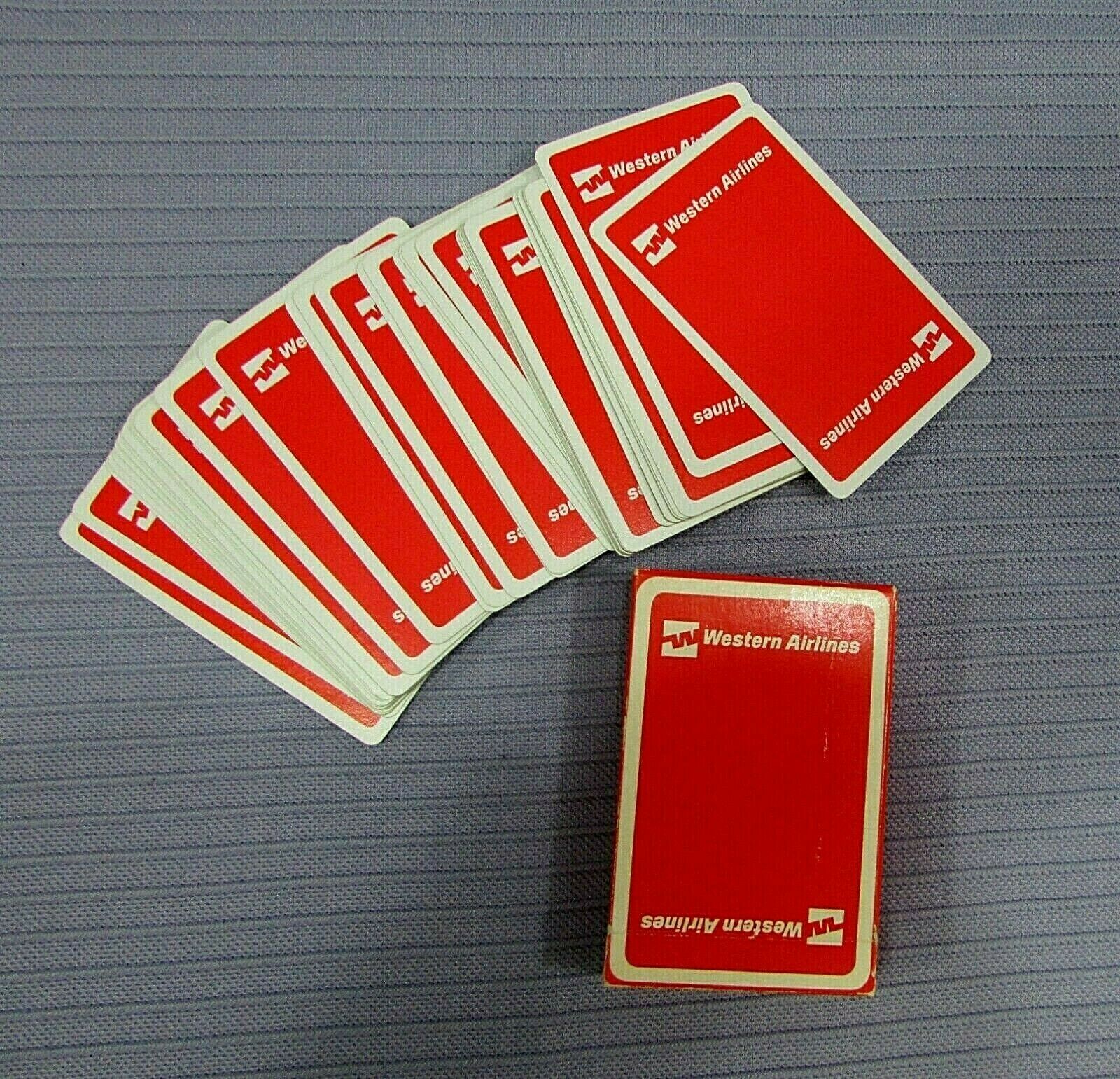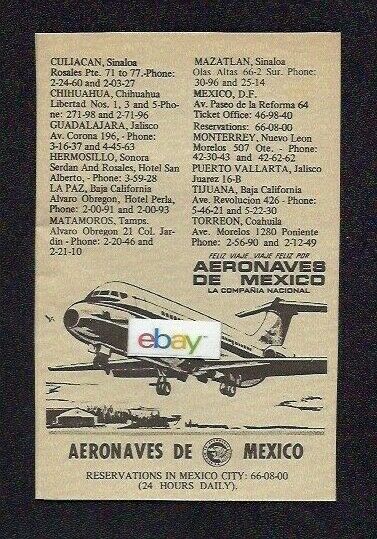-40%
VINTAGE ***1927 - SINGLE ENGINE BOEING 40-B-4*** {UNITED AIR LINES} PHOTO PRINT!
$ 5.27
- Description
- Size Guide
Description
1950-60 circa. ~1927 - SINGLE-ENGINE BOEING 40-B-4 - 110 M.P.H.~ UNITED AIR LINES (SCHOOL AND COLLEGE SERVICE) PHOTO PRINT!Early aviation history! (Approximate dimensions: 11" long x 8 1/2" high).
____________________________________________________________________________
Boeing Model 40
Jump to navigation
Jump to search
Model 40
Role
Mail plane
Manufacturer
Boeing
First flight
July 20, 1925
Introduction
July 1, 1927
Primary users
Boeing Air Transport
Varney Air Lines
Pacific Air Transport
Number built
ca. 80
The
Boeing Model 40
was a United States
mail plane
of the 1920s. It was a single-engined
biplane
that was widely used for airmail services in the United States in the 1920s and 1930s, especially by airlines that later became part of
United Airlines
. It became the first aircraft built by the
Boeing
company to carry passengers.
Development and design
[
edit
]
In 1925, the
US Post Office
issued a requirement for a
mailplane
to replace the ex-military
DH-4s
then in use. The new aircraft was required to use the same
water-cooled
Liberty
V12 engine
as used by the DH-4, of which large stocks of war-built engines were available.
[1]
The resultant aircraft, the
Boeing Model 40
, was a conventional
tractor
biplane
, with the required Liberty engine housed in a streamlined cowling with an underslung radiator. The aircraft's fuselage had a steel tube structure, with an
aluminum
and laminated wood covering. Up to 1,000 lb (450 kg) of mail was carried in two compartments in the forward fuselage, while the single pilot sat in an open cockpit in the rear fuselage. The wings and tail were of wooden construction, and the Model 40 had a fixed
conventional landing gear
.
[1]
[2]
The Model 40 made its first flight on July 7, 1925. Although the prototype was purchased by the US Post Office, the production order went to the
Douglas M-2
.
[1]
[3]
Model 40C at Oshkosh 2008. Both passenger entry doors, one for each of the two-seat rows, are on the left side of the fuselage.
The Contract Air Mail Act of 1925 set out the gradual
privatization
of the Post Office's Air Mail routes. In late 1926, bids were requested for the main transcontinental trunk mail route, which was to be split into eastern and western sections, with Boeing bidding for the western section. Boeing revived the design for the tender, with the
Model 40A
replacing the Liberty engine with a 425 hp (317 kW) air-cooled
Pratt & Whitney Wasp
radial engine
, which was 200 lb (91 kg) lighter than the Liberty, even ignoring the weight of the Liberty's radiator and cooling water. The fuselage was redesigned to make more extensive use of welded steel tubing, and an enclosed cabin was fitted between the mail compartments, allowing two passengers to be carried as well as 1,200 lb (540 kg) of mail. Boeing's bid of per lb was much less than any of the competing bids, and Boeing was awarded the
San Francisco
to
Chicago
contract in January 1927, building 24 Model 40As for the route (with a further aircraft being used as a testbed by Pratt & Whitney).
[3]
[4]
[5]
The next model to reach production was the
Model 40C
, with an enlarged cabin allowing four passengers to be carried. Meanwhile, Boeing Air Transport's Model 40As were modified by replacing their Wasp engines with 525 hp (391 kW)
Pratt & Whitney Hornet
radial engines to become the
Model 40B-2
.
[6]
The
Model 40B-4
was a new-build aircraft combining the four-passenger cabin of the Model 40C with the Hornet engine of the B-2.
[7]
Production continued until February 1932.
[8]
Operational history
[
edit
]
Cover flown from San Francisco to Chicago by a Model 40A operated by Boeing Air Transport on the first day US Transcontinental Air Mail under Contract. July 1, 1927
Boeing's airline,
Boeing Air Transport
, commenced operations on the San Francisco–Chicago route on July 1, 1927.
[9]
Variants
[
edit
]
A Boeing Model 40 flying over mountains in Washington State, 1930s.
Model 40
Original 1925 design with Liberty engine.
Model 40A
Revised 1927 design for BATC. the aircraft was powered by a Pratt & Whitney Wasp radial engine, plus seating for two passengers in an enclosed cabin; 25 built. Received Dept of Air Commerce Approved Type Certificate #2.
[10]
Model 40B
Model 40As re-engined with a 525 hp (391 kW)
Pratt & Whitney Hornet
radial piston engine. 19 Model 40A were converted. Redesignated
Model 40B-2
.
Model 40B-4
Revised Model 40B with seating for four passengers and other improvements. Equipped with openable windows, plus seating for four passengers; 38 built.
Model 40B-4A
One Model 40B used as engine testbed by
Pratt & Whitney
.
Model 40H-4
Four Model 40B-4s built by
Boeing Canada
. Two aircraft were exported to
New Zealand
.
Model 40C
Similar to Model 40B-4 but with Pratt & Whitney Wasp engine of Model 40A. (ten built, all later converted to Model 40B-4 standard).
[11]
[12]
Model 40X
Unique special-order machine similar to Model 40C with only two-passenger cabin and extra open cockpit forward of pilot's cockpit.
Model 40Y
Unique special-order machine similar to Model 40X, but with Pratt & Whitney Hornet engine.
Surviving aircraft
[
edit
]
Boeing Model 40C at Oshkosh 2008
As of February 17, 2008, Boeing 40C c/n 1043 became the only airworthy example in the world. It also holds the title of the oldest flying Boeing in the world. In 1928, the aircraft was substantially damaged in a crash near Canyonville, OR. After being recovered, it was completely rebuilt over an eight-year period from 2000 to 2008 and an estimated 18,000
man hours
by Pemberton and Sons Aviation
[14]
in
Spokane, Washington
. On May 8, 2010, this airplane had an aerial rendezvous with Boeing's newest passenger aircraft, the
Boeing 787
Dreamliner.
[15]
In September, 2017, it was sold to the
Western Antique Aeroplane & Automobile Museum
in Hood River, Oregon. It remains airworthy and flies on special occasions.
The
Henry Ford Museum
in
Dearborn, Michigan
, contains a 1927 Boeing 40B-2, number 285.
The
Museum of Science and Industry
in
Chicago, Illinois
has a 1928 Boeing Model 40-B on display in its Transportation Gallery. (N288)
The
Museum of Flight
in
Seattle, Washington
has a complete full-scale replica and two partially finished replica fuselages (showing what the original
Boeing
factory would have looked like circa 1928-29) on display.
Specifications (Model 40A)
[
edit
]
Model 40C Pilot's panel with some modern features added for safe operation
Model 40C front seat of rear passenger cabin showing the fold-down writing desk/table
General characteristics
Crew:
one
Capacity:
two passengers and 1,200 lb (540 kg) mail
Length:
33 ft 2.25 in (10.12 m)
Wingspan:
44 ft 2.25 in (13.47 m)
Height:
12 ft 3.1 in (3.74 m)
Wing area:
547 sq ft (50.82 m
2
)
Empty weight:
3,531 lb (1,605 kg)
Max takeoff weight:
6,000 lb (2,727 kg)
Powerplant:
1 × Pratt & Whitney Wasp , 420 hp (313 kW)
Performance
Maximum speed:
128 mph (206 km/h, 111 kn)
Cruise speed:
105 mph (169 km/h, 91 kn)
Range:
650 mi (1,046 km, 565 nmi)
Service ceiling:
14,500 ft (4,420 m)
Rate of climb:
770 ft/min (3.9 m/s)
Accidents and incidents
[
edit
]
February 26, 1928: A Boeing Air Transport Model 40B (c/n 891, registration NC280) crashed near
Marquette, Nebraska
after the aircraft struck trees when flying low to avoid air turbulence; the passenger was killed, but the pilot survived.
[17]
April 17, 1928: A Boeing Air Transport Model 40B (c/n 893, registration NC282) crashed at Federal, Wyoming, killing one of two on board.
October 2, 1928: A Pacific Air Transport Model 40C (c/n 1043, registration NC5339) crashed on Canyon Mountain near Canyonville, Oregon, killing one of two on board.
November 18, 1930: A Pacific Air Transport Model 40B-4 (c/n 1036, registration NC5340) crashed into a mountainside at 4500 feet in a snowstorm, killing all three on board.
January 22, 1931: A Varney Air Lines Model 40B-4 (c/n 1148, registration NC741K) crashed into Bluff Mountain in dense fog, killing the pilot.
May 5, 1931: A Pacific Air Transport Model 40B-4 (c/n 1044, registration NC5390) crashed in La Tuna Canyon in the
Verdugo Mountains
while attempting to land at Burbank Airport in low visibility, killing both crew.
September 16, 1931: A Pacific Air Transport Model 40B-4 (c/n 1428, registration NC10347) crashed into
San Francisco Bay
after takeoff for reasons unknown, killing all four on board.
November 23, 1931: A Boeing Air Transport Model 40, registration NC7465, crashed eight miles west of Salt Lake Airport, killing the pilot; it was believed that the plane overturned while attempting to land at night.
November 26, 1931: A Varney Air Lines Model 40B-4 (c/n 1419, registration NC10338) crashed near
Pasco, Washington
in low visibility while attempting to land, killing the pilot.
February 2, 1932: A Boeing Air Transport Model 40, registration NC7470, crashed on landing at
Rio Vista, California
; the plane struck an irrigation ditch and caught fire, killing one of two on board.
May 3, 1932: A Varney Air Lines Model 40B-4 (c/n 1155, registration NC830M) crashed at Portland, Oregon, killing both crew.
May 16, 1932: A Pacific Air Transport Model 40, registration NC5589, crashed and burned in fog while attempting to land at Burbank Airport, killing all three (both pilots, radioman) on board.
December 14, 1932: A Boeing Air Transport Model 40B-4 (c/n 1168, registration NC842M) crashed at Rocky Ridge, Colorado, killing the pilot.
____________________________________________________________________________
We strive to find rare and unusual vintage pieces to match up with your special collection.
Returns are readily accepted if the item(s) is the same as described. Item(s) must be in the exact condition as delivered. Buyer pays return shipping.
Items .00 or more will be shipped with tracking.
Items 0.00 or more will be shipped with insurance.
Combined shipping discount for multiple purchases (Please wait for us to send invoice for 2 or more items).
Please feel free to contact us with any questions or concerns.
Be sure to check out our "ever changing" inventory of vintage postage stamps, postal covers, postal cards, billheads, letterheads, stock certificates, stock coupons, bank checks, railroad and steamship ephemera, Civil War ephemera, World War I ephemera, World War II ephemera, promissory notes plus many other special items we can pass onto our customers.
Empire Stamp Company
INTERNATIONAL SHIPPING:
USPS FIRST CLASS MAIL INTERNATIONAL/FIRST CLASS PACKAGE INTERNATIONAL SERVICE.
DELIVERY TIMES WILL VARY BY LOCATION FOR INTERNATIONAL BUYERS.










